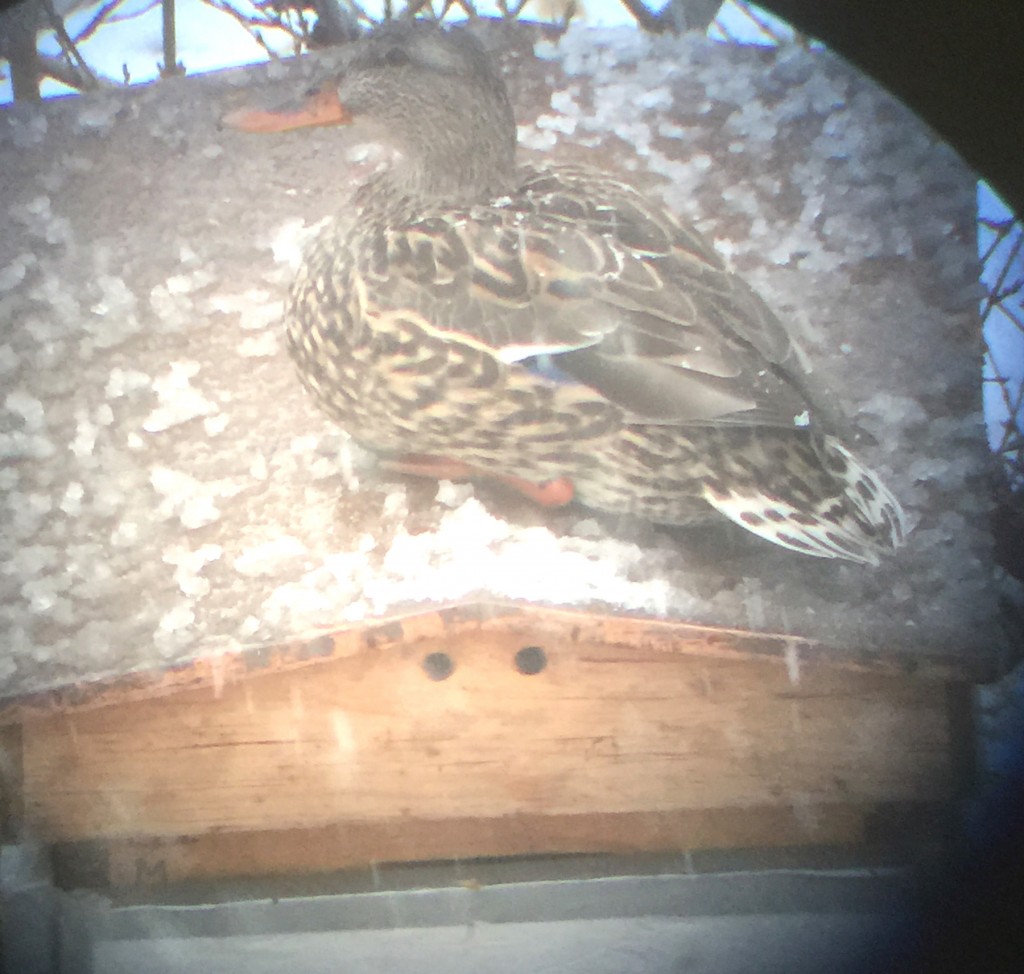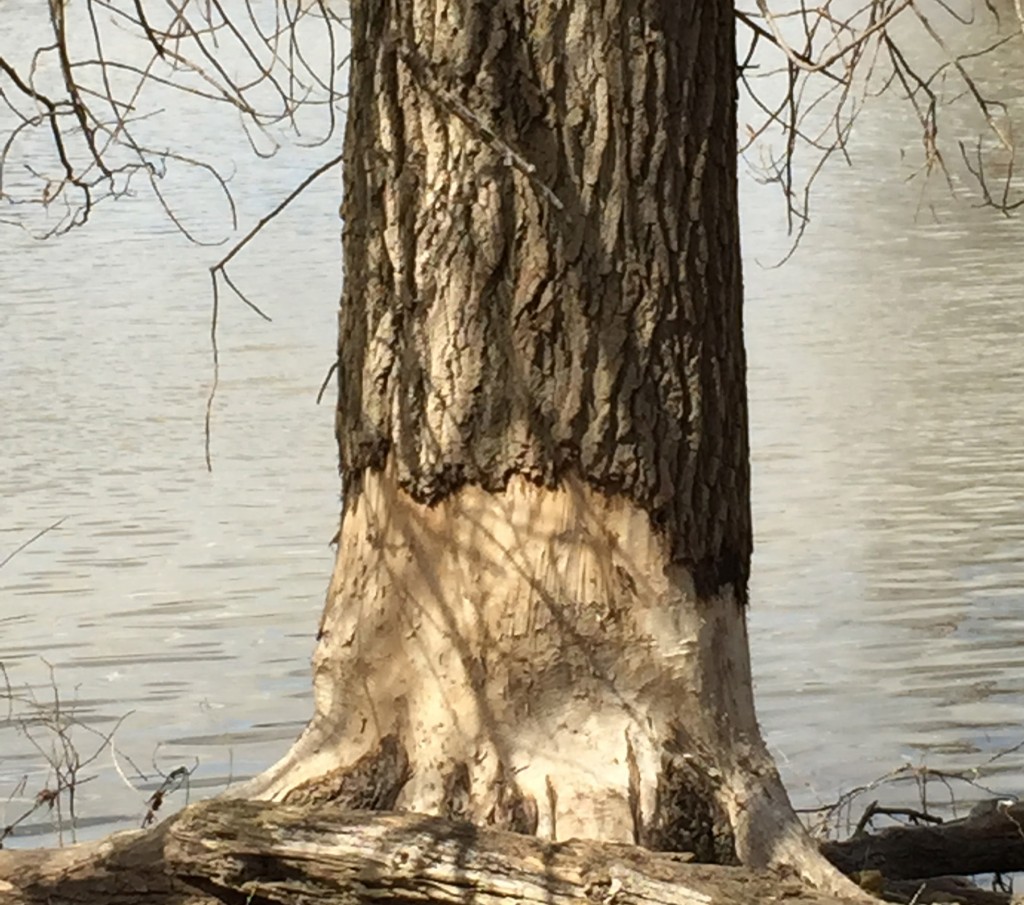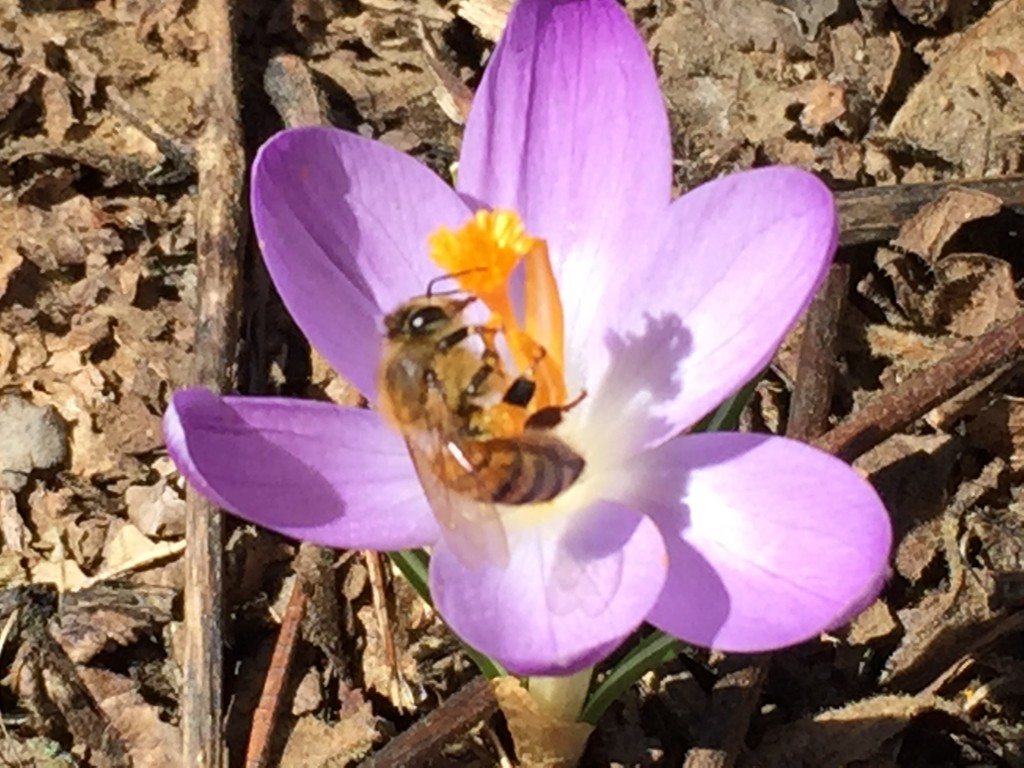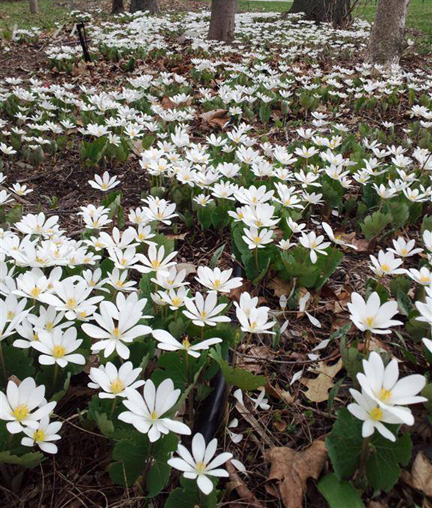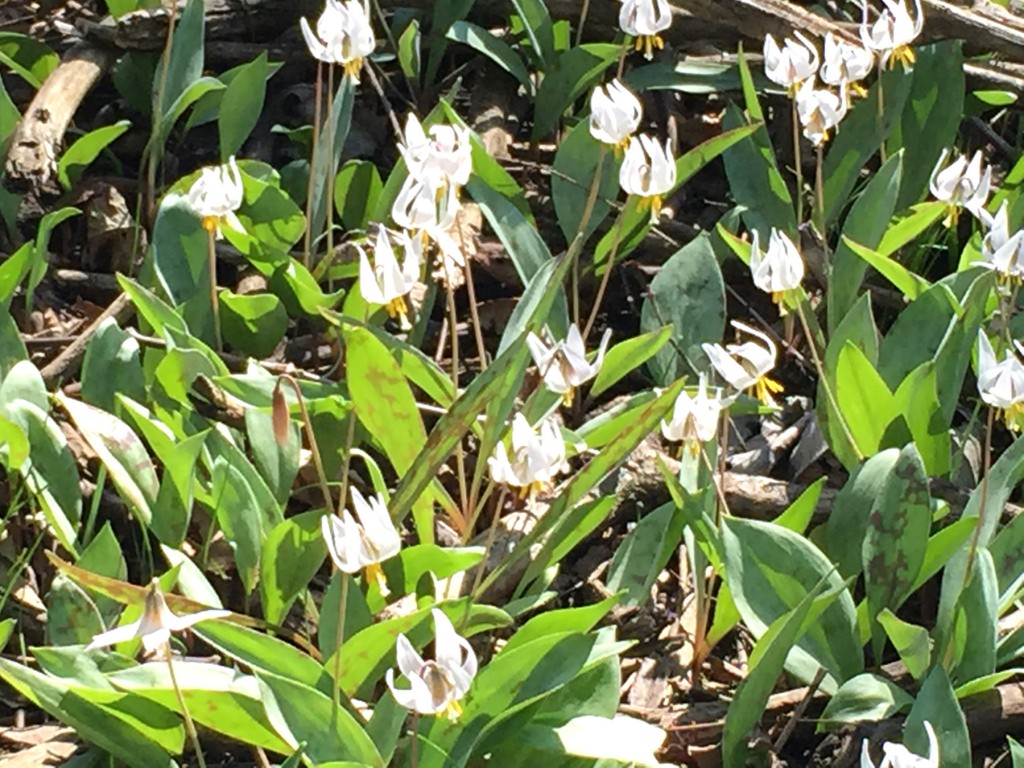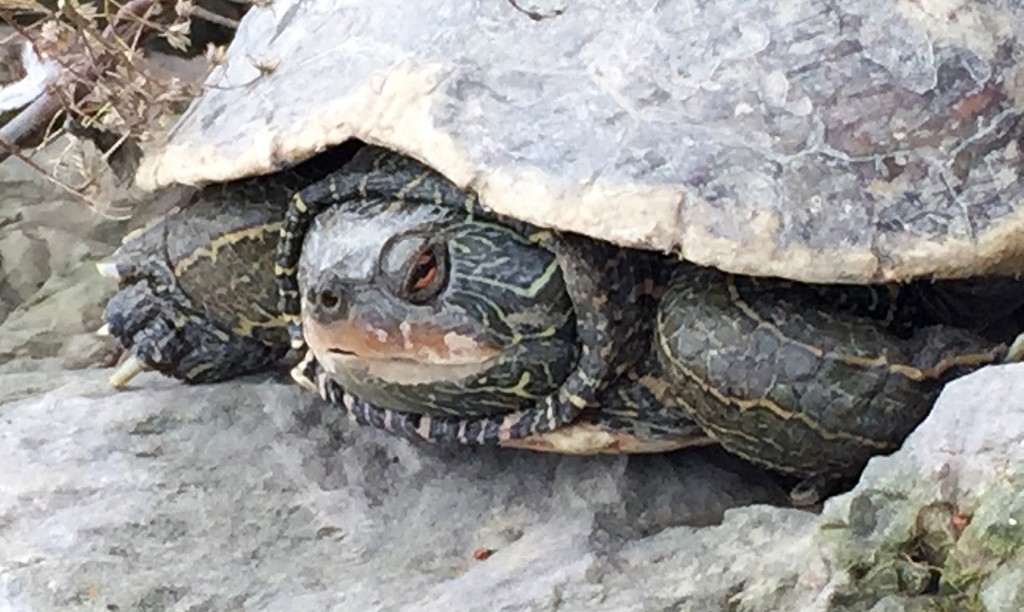By March 14 this year I’d had 30 individual days of superb cross-country skiing in Perrysburg, the bees had survived a very cold winter and had reappeared from both hives, and the ice on the Maumee as well as this ice carved winged creature on Louisiana Avenue had both started to melt (She really belonged in my previous blog on Winter Fliers)

I’ve no idea what this mallard thought she was doing in the snowflakes one of my bee hives?
This year the spring thaw coincided with high wind and water. Garden Island was soon covered, like last year,

though the water did not reach the high water marker stake from last year.
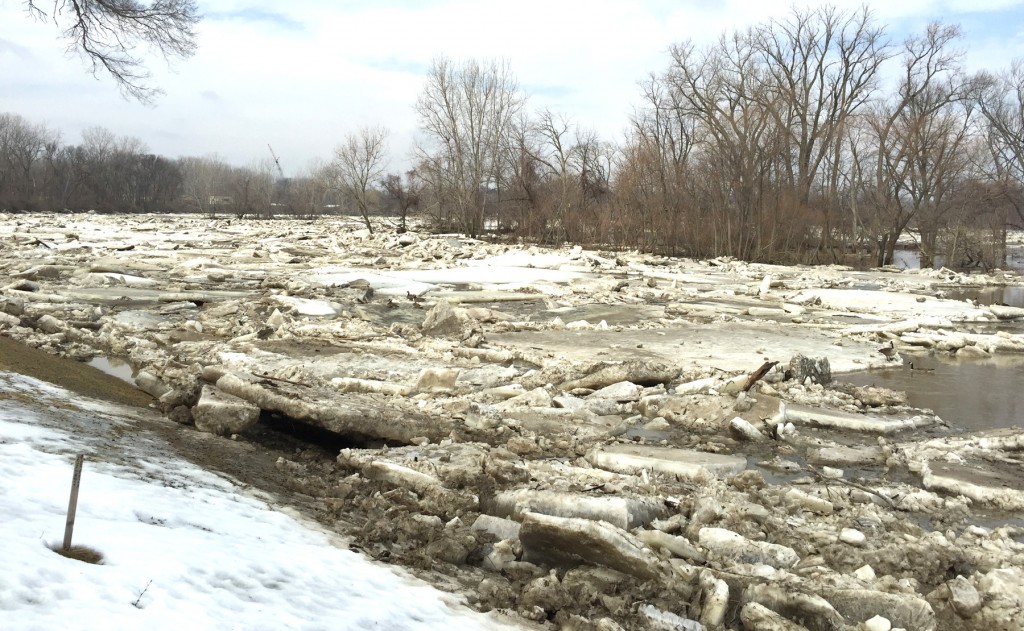
And the ice piles at the Boat Club easily exceeded the previous year’s accumulation.
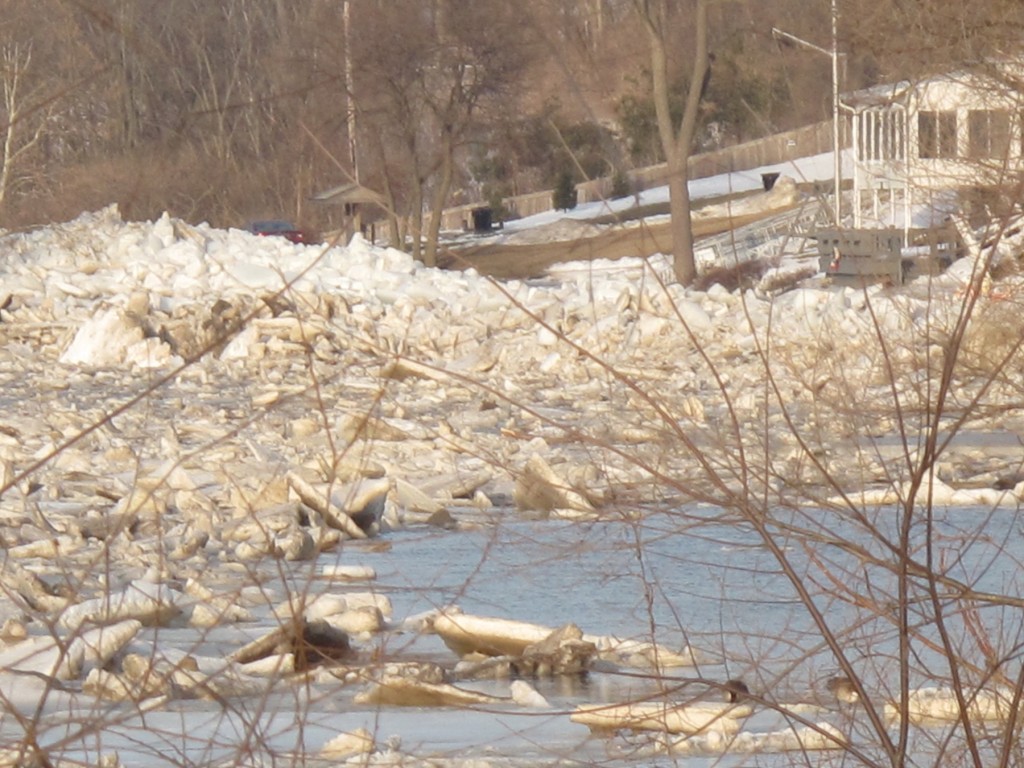
But the West wind jammed ice in front of the turnpike bridge and then drove the ice, piling floe upon floe ever higher to make the greatest mountains anyone could remember. Ryan Bannister took this photo.

Further upstream icebergs knocked over the railing and most of the tombstones at Maumee Sidecut cemetery. The bergs stripped off enough bark from many, many riverside trees to essentially kill them by slicing their supply lines of water and sap. (All tree nutrients run at the skin of the trunk. The heart wood in the middle of a tree’s trunk is lifeless).
Some riverside trees also have a tough time from what looks the return of the beaver. (I’ve not seen it yet but this looks like its work).
The last of the skittish winter ducks (not so many this year) began to leave as it got warmer.
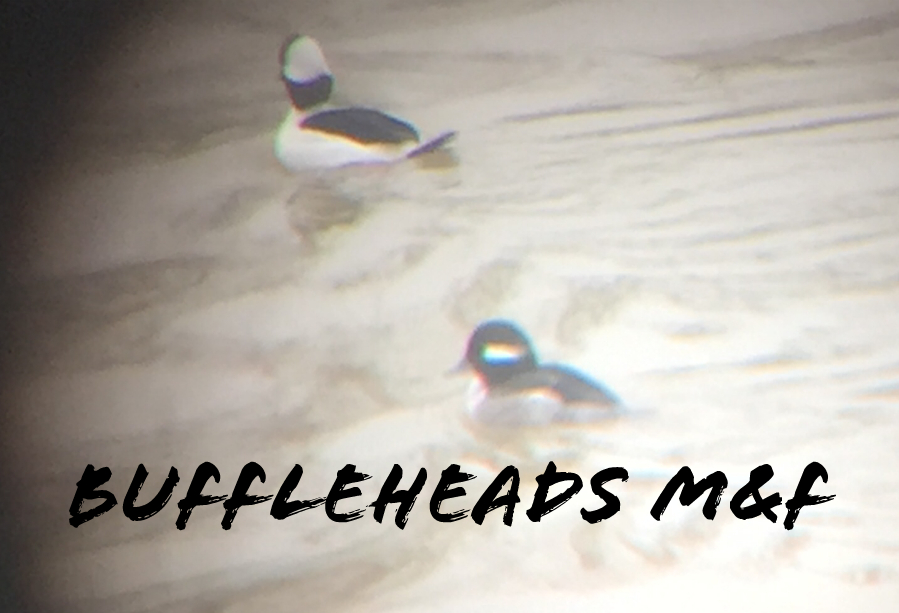
The bees came out of my West hive to pack the yellow pollen of the crocus
and blue of Siberian squill on their hairy legs.
The East hive fooled me by not showing a single bee though it had been full only a month previously. I waited 5 minutes and not one came out. In desperation I lifted the lid and was immediately jumped on by hundreds of them who’d being lying in wait to play just such a trick! As I dropped the lid and ran I could almost hear them laughing (sorry, no photo of that).
The daffodils also look great now, but this non-native flower seems to do very little in the way of supporting the local pollinators. I’ve only seen a single bumblebee once that looked to be big enough to tackle the task.
Hal’s magnificent Bloodroot came up for their brief glorious week, as seen in this picture by Rick Barricklow:
Our summer task is a weekly ‘monitoring’ of the first blooming of native flowers along two walking trails in two local parks. Easier said than done: the first two bloomers we’ve seen have been so small it’s been hard to i.d. them. Each was barely 25 mm (an inch) tall.
There are banks of yellow and white Trout Lily.
They come out so early in the spring and last such a short time that it is often too cold for the pollinating insects. So these flowers often don’t have nectar. They can self-pollinate but the resulting seeds are not as vigorous as when insects which perform the cross pollination while gathering pollen for their brood.
We are already back to digging up aliens and planting native flora to support the native fauna, here represented this month by a magnificent 280 mm (11 inch) long Map Turtle.
It climbed up on a riverside rock at the bottom of the garden and sunned itself for 3 days. It ignored offered wriggling worms. I think it might have needed crayfish which are unavailable right now.
I doubt if any of the summer months to come will offer such a contrast as these last two.

